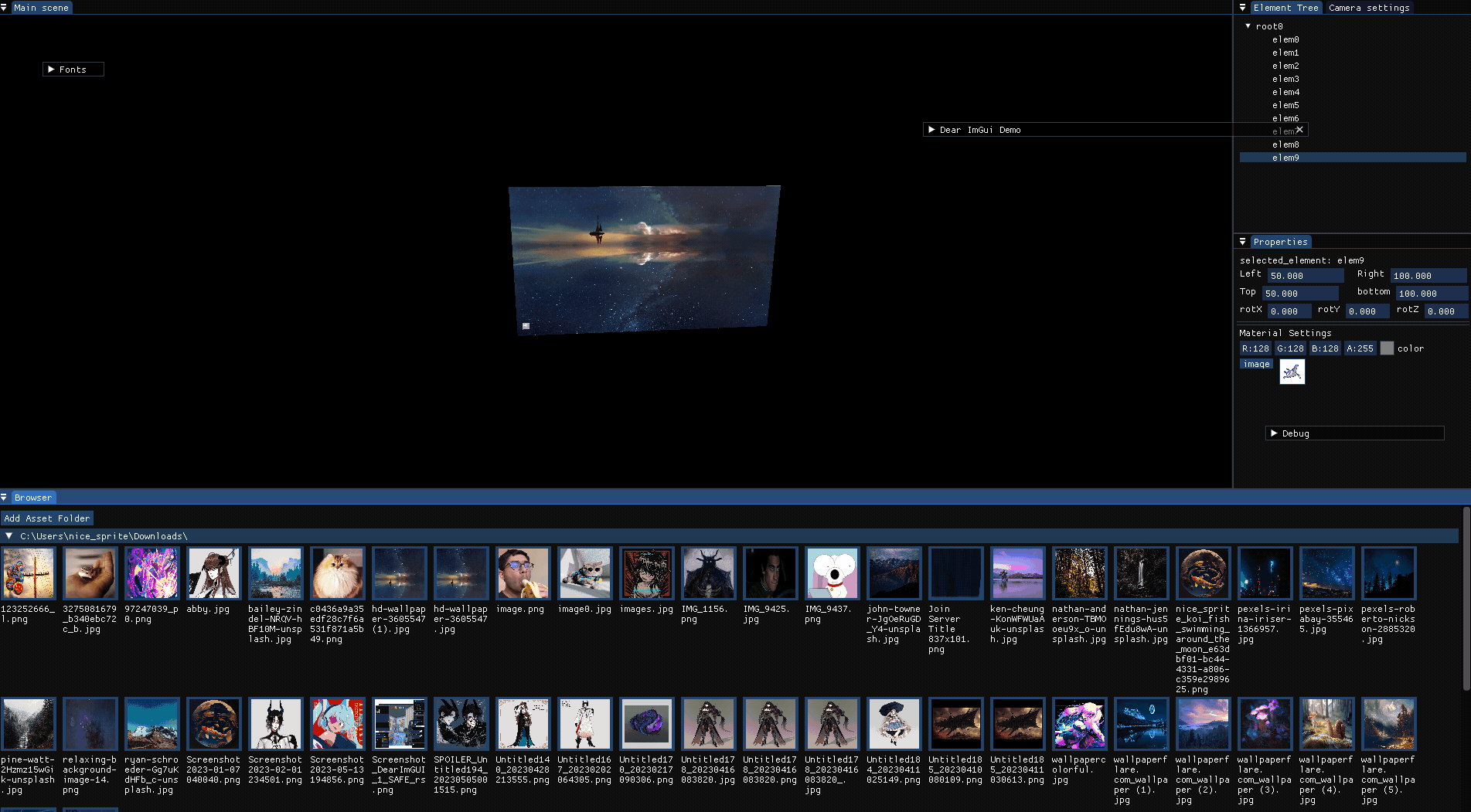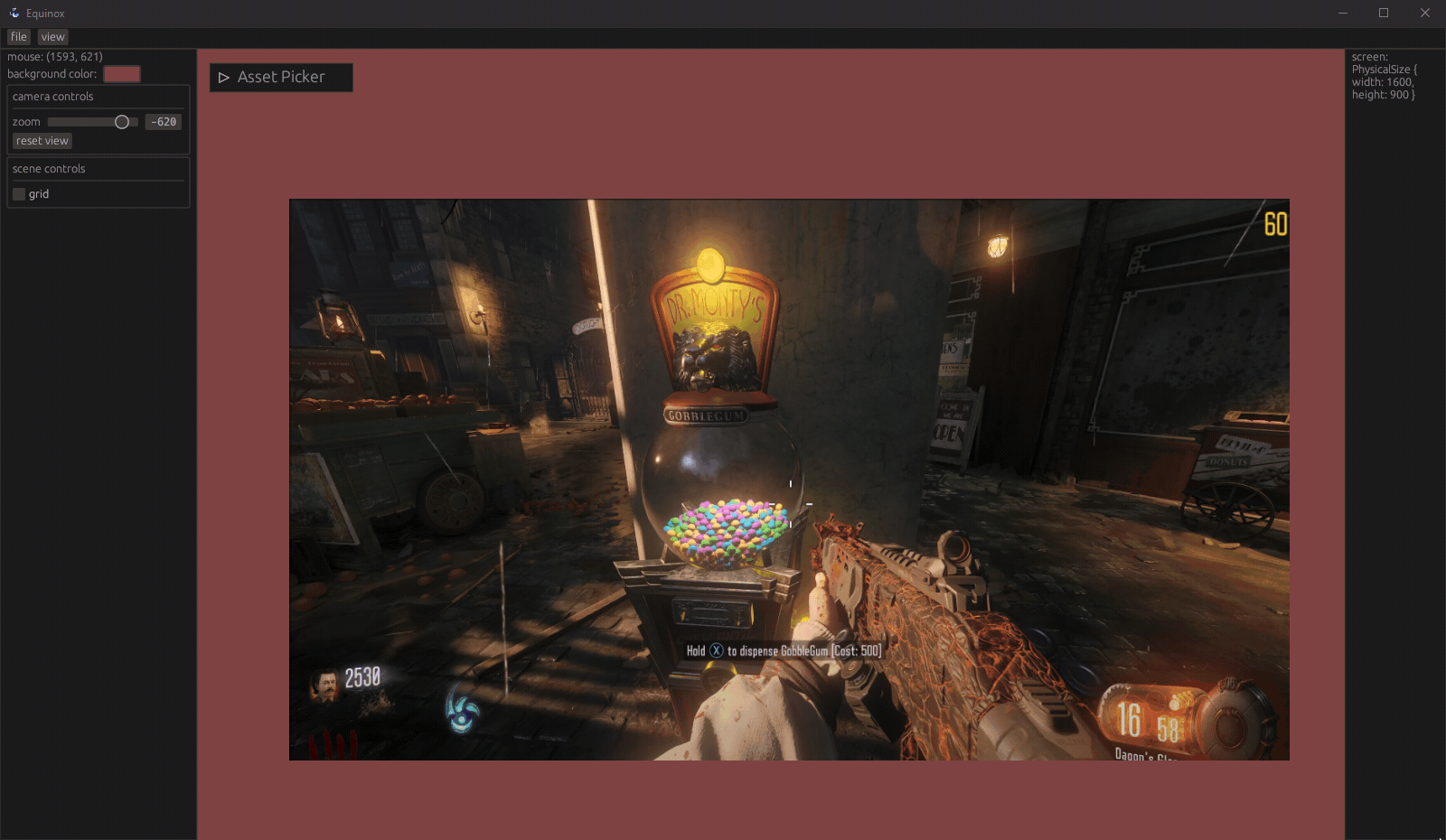Live Reload
Live reload, or hot-reload, or whatever you wish to call it, allows for all the code in the application to be automatically
updated when a change is detected in engine.dll. This allows me to quickly make, for example,
a debug ImGui window that shows the camera transforms without having to close the program.

Multithreaded Asset Import
One of the most common tasks a user will do is use the asset browser to add specific images to their UI scene.
This involves waiting on the disk, memory, and image parsing (stb_image) to load the image for use, which takes way longer than 1 frame to finish.
I added a dedicated asset loading thread that enables loading very large images, or whole directories full of large images, without
any hitching or blocking the main input/render thread of the program.
Here it is in action:

SDF Font Atlas
Since the LUI editor allows users to zoom in and closely inspect their work, it was important to me that fonts
scale efficiently and smoothly. I used Freetype to implement signed distance field fonts and rolled my own simple font atlas generator on top of it. There's still improvements and bug fixes to be made, but
overall the quality is good, performance is great, and text layout is mostly working!
